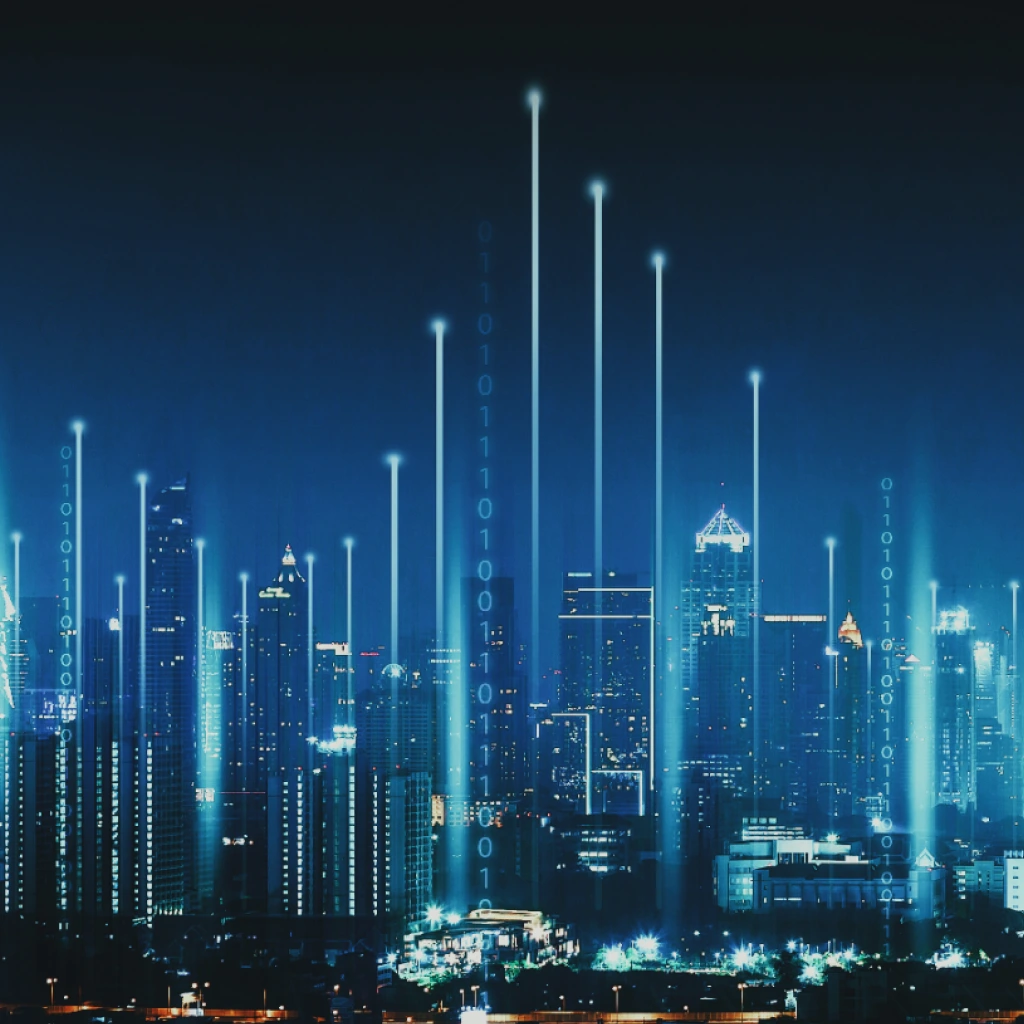Top 5 Disruptive Technologies That Are Changing the World
From life-saving vaccines to 3D printing, technology is disrupting just about every industry imaginable. Within the past century alone, we have made exponential technological advancements to boost humanity into the future. This leads us to an important question: What is the next disruptive tech and what are the next big technologies?
What is Disruptive Tech?
Disruptive technology is innovative inventions or evolved current technology that changes the way society behaves, thinks, or interacts. It also changes the way businesses or industries operate.
In its time, plastic, for example, disrupted the way humanity packaged and created everyday products. It replaced other materials like wood, glass, and metals since it was lightweight and easier to transport. Ironically, a much-needed new disruptive technology is needed to clean up or reduce the plastic made and used since its overproduction.
Nowadays, streaming platforms for movies, television series, and music have disrupted the way we watch and listen to entertainment. With the help of the internet, streaming platforms have shifted the way entertainers obtain livelihood as well. Not only has humanity changed the way they receive entertainment, but the entertainment business has evolved too.
Top Disruptive Technologies That Could Dominate the Future
The Fourth Industrial Revolution is here, and it is composed of complete digital transformations and emerging technological advances. Here are some notable disruptive technologies that are shaping our future:
Blockchain
Blockchain is a large, distributed database in which all types of transactions can be recorded directly between parties without the need for intermediaries, in real-time, securely, and with complete traceability.
Why is blockchain such disruptive technology? It may be because it has four important characteristics:
- Blockchain is an open record
- The open ledger allows for data transparency, as each person knows what information everyone else has on the network
- It is a chain of transactions
- Each transaction between parties is recorded on a block, and once verified, the transaction is added to the chain, which allows full traceability of the operations performed
- It has a decentralized nature
- There is no centralized transaction log. Instead, all participants have an identical and updated copy of the database. This way, if part of the system fails, it can still function
- It has a consensus mechanism
- The verification of each transaction block, which is necessary for the block to be added to the chain, requires a complex mathematical algorithm to be solved. Each new block contains information from the previous one, and this is repeated on all copies of the blockchain, which in practice shields the system from any attempt at falsification
These characteristics make blockchain very practical to use and manage. Industries such as banking, government, supply chain management, healthcare, insurance, and transportation are using blockchain to facilitate processes and increase security.
Artificial Intelligence and Machine Learning
Machine learning (ML) and artificial intelligence (AI) go hand in hand. After all, machine learning is a component of artificial intelligence.
Artificial intelligence is the ability for computers to imitate cognitive human functions such as learning and problem-solving. Meanwhile, machine learning is when we teach computers to extract patterns from collected artificial intelligence data and apply them to new tasks that they may not have completed before.
AI is so disruptive that many people believe it could evolve into robots, take over the planet, and overtake humans. Not so fast. The collaboration between humans and machines could make for a better future and a better planet.
In a much simpler example, Electronic Line Calling uses artificial intelligence to determine if tennis balls have landed inside or outside court lines during tennis matches. The Electronic Line Calling technology uses data, productive algorithms, geometry, and TV cameras to make predictions more accurate than line umpires—the people that help judge if the tennis ball fell out of the court or not. During the pandemic, line-calling technology replaced line umpires during tennis matches to help reduce the spread of infections. This is a notable example of how AI has disrupted the sports industry and contributed to normality during unprecedented times when such games did not necessarily have to happen.
The Cloud
The cloud is everywhere. It has become an essential resource for almost all companies and even personal use. What is it exactly and how has it become a disruptive technology?
The cloud are servers that are in data centers all over the world. It allows users to access files and applications from various devices, because the storage takes place on servers in a data center instead of locally on the user’s device.
This is explained best if you think about when you used to have to save photos on your cell phone, but your cell phone would eventually run out of memory to hold all the pictures taken by the device. Now, thanks to the cloud, you can take pictures with your cell phone and seamlessly save and access them from your laptop without having to transfer it over.
The cloud offers three great benefits in today’s ever-changing environment:
- There is no need to download multiple copies of documents
- Files are hosted on the cloud and are accessible via the web from any device with internet access
- Wherever you are, everything stored on the cloud goes with you
Certainly, the cloud has changed the way businesses and entire industries utilize and share data.
Internet of Things
The internet of things (IoT) connects physical objects to the internet. Unique identifiers are embedded or placed on objects which allow for easy connection and communication between each other, or a person or central object controlling it.
The term thing can be a person with a heart monitor or an automobile with sensors to detect many anomalies. Internet implies the thing is connected. Hence the term: Internet of Things.
Some components of IoT include:
- RFID
- RFID is a tag identification system. These tags can be added to an article or a living being, and use antennas to identify themselves
- EPC
- The EPC or Electronic Product Code can be considered the successor to traditional bar codes. It allows a more detailed and unique follow-up of any product. EPCs rely on RFID technology
- Edge computing
- This brings data processing closer to where the data was initially gathered, which reduces the need for cloud storage and bandwidth consumption
- Word
- In computer science, “word” refers to a data unit. More specifically, it is a string of bits that functions as a set. The extension of a standard word is 16, 32, or 64 bits
IoT has disrupted society because it has digitalized physical objects. This has shaped business models and industries and will certainly contribute to a more connected world.
Cybersecurity
One of the biggest threats to companies is computer attacks. At the same time, privacy vulnerability is an issue attracting increased attention. Consequently, a cybercrime industry is emerging.
With disruptive technologies emerging faster than ever, cybersecurity needs to step up—and it is. Broader solutions such as the use of AI and ML, IoT protection, multi-factor authentication, and permission requirements allow cybersecurity to stay ahead of attacks. That why it’s important to recognize that alongside the growth of disruptive technologies, innovation behind cybersecurity will always have to evolve with it.
Learn About Disruptive Technologies at MIT Professional Education
MIT Professional Education is recognized as making disruptive technology knowledge accessible to people from all over the world, in English, Italian, French, Portuguese and Spanish. Our Digital Transformation: From AI and IoT to Cloud, Blockchain, and Cybersecurity course covers the five disruptive technologies discussed in this article that are shifting the way businesses and industries operate. In the course you’ll cover topics regarding:
- Intelligent transactions and contracts via Ethereum
- Architecture of the cloud and deep knowledge of GitHub
- WebSocket chat application
- Potential uses of the Internet of Things (IoT) applied to the business field
- Long transformative legacy that artificial intelligence is leaving on industry and education
Learn more about the Digital Transformation: From AI and IoT to Cloud, Blockchain, and Cybersecurity course to transform your career or learn more about the other programs at MIT Professional Education.

Clara Piloto
Director of Global Programs, Director of Digital Plus Programs
MIT Professional Education
Massachusetts Institute of Technology
professional.mit.edu
